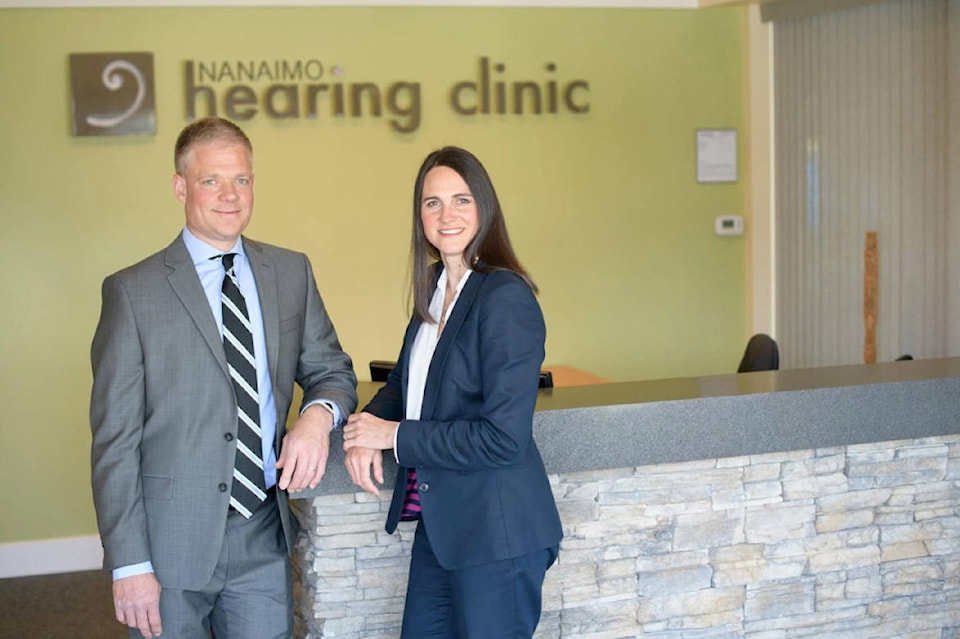Most people are familiar with hearing aids that ‘turn up the volume’ in a slightly damaged ear, but did you know there are also hearing aids to send sound across your head from a bad ear to a good ear?
“It’s called CROS technology. It stands for contralateral routing of signal, which is really fun to say because it sounds so high-tech!” says Hanan Merrill, a hearing practitioner and owner of Nanaimo Hearing Clinic. “When you have one ear that’s dead or unusable, but the other ear is fine, CROS can send the sound from one side to the other.”
Why use CROS
When an ear is unusable, you may still be able to hear some loud sounds, but your brain can’t make good sense of them — the sound is blurry, fuzzy or unclear. It serves no practical benefit on its own, and if you put a regular hearing aid in it will only make the sound quality worse. That’s where a CROS hearing aid comes in handy.
With CROS you wear hearing aids in both ears. The aid in your dead ear just has a microphone, picking up sounds from that side of your head. It sends that sound to the hearing aid in the good ear via wireless signal.
“We have two ears for a reason. If at Tim Hortons talking to a friend, I want to hear what they’re saying! But if they’re sitting beside my unusable ear I’ll have to turn my head to hear them; with CROS you don’t have to do that,” Hanan says. “It’s also really useful when you’re driving, if your unusable ear is directed towards your partner. You don’t have to take your eyes off the road in order to hear them.”
Try before you buy
CROS technology has its limitations, so it isn’t beneficial for everyone. Having two ears allows our brain to tell where sound is coming from, based on the differences between one side of our head and the other:
- Time difference: Sound arriving at one ear before the other.
- Volume difference: Sound being louder on one side, and fading before it reaches the other ear.
“Our brain can detect those subtle differences when both ears are healthy, but CROS can only help so much. Healthy ears can also help us filter background noise and focus on the sounds we want, by using those subtle differences in volume and tone,” Hanan says.
Nanaimo Hearing Clinic always has CROS demos on hand, so you can test the technology and see if it benefits your life. There’s no obligation to buy — these hearing aids work for some but not for all. Book an appointment by calling 250-585-4100 or at nanaimohearingclinic.com/contact. Find Nanaimo Hearing Clinic at 501-800 Turner Rd in Cactus Club Plaza.
what doesn’t it do?
